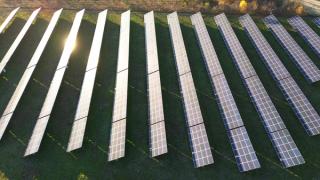
Hong Kong case study: Overcoming barriers to a Zero Landfill direction through solutions that decarbonise the waste sector
by Dane Ancheta
View post

As solar energy continues to power Aotearoa’s low-carbon future, one increasingly critical, and sometimes overlooked, consideration is solar glint and glare (G&G). What appears to be a simple reflection can, in the wrong place and at the wrong time, become a serious issue for pilots, drivers, train operators, or even nearby residents. That’s why G&G assessments are now a key feature of resource consent applications, and why expert input matters.
With extensive experience across New Zealand and Australia, SLR has built significant capability in this field. We’ve contributed G&G assessments to numerous solar farm consent applications, both as part of comprehensive environmental packages and as standalone assessments.
In addition to conducting full G&G studies, we also provide:
Our team has supported multiple proposed solar farms across New Zealand, including high-profile sites such as Hawke’s Bay Airport and Christchurch International Airport (Kōwhai Park).
G&G studies are typically undertaken once the preliminary solar panel layout and technology selection have been confirmed. This allows for meaningful analysis of:
Our findings often contribute to wider environmental inputs, particularly in collaboration with SLR’s Landscape Architecture team, for example, identifying opportunities for mitigation planting to reduce off-site effects.
In New Zealand, we utilise the ForgeSolar Solar Glare Hazard Analysis Tool (SGHAT), in conjunction with Threshold Increment (TI) analysis developed by our in-house team. SGHAT is widely accepted as the international industry standard for modelling solar G&G effects, and it allows us to:
Alongside SGHAT, our TI analysis enables more nuanced interpretation, incorporating context-specific lighting conditions and assessing actual visual impact across different observer types.
Beyond modelling, we apply a real-world lens to the analysis of solar reflections specific to New Zealand conditions. This includes evaluating potential G&G impacts on sensitive receptors including:
By combining computational tools with practical knowledge, we can distinguish between benign reflections (such as those similar to light on water) and more significant glare effects that may require mitigation.
With experience across a broad range of New Zealand solar projects, including high-sensitivity sites, we understand how to deliver G&G assessments that support both development outcomes and community acceptance.
Our goal is not just to meet regulatory expectations, but to ensure G&G impacts are well understood and clearly communicated. We help project teams navigate technical risks, support engagement with regulators, and deliver assessments that are robust, evidence-based, and grounded in experience.
Whether you require support for a full solar farm application, a peer review, or expert evidence, our team is equipped to contribute clarity and confidence to your project, ensuring the project shines for the right reasons.

by Dane Ancheta

by James McKechnie, Ian Todreas

by Alan Clarke, Robin Kelly